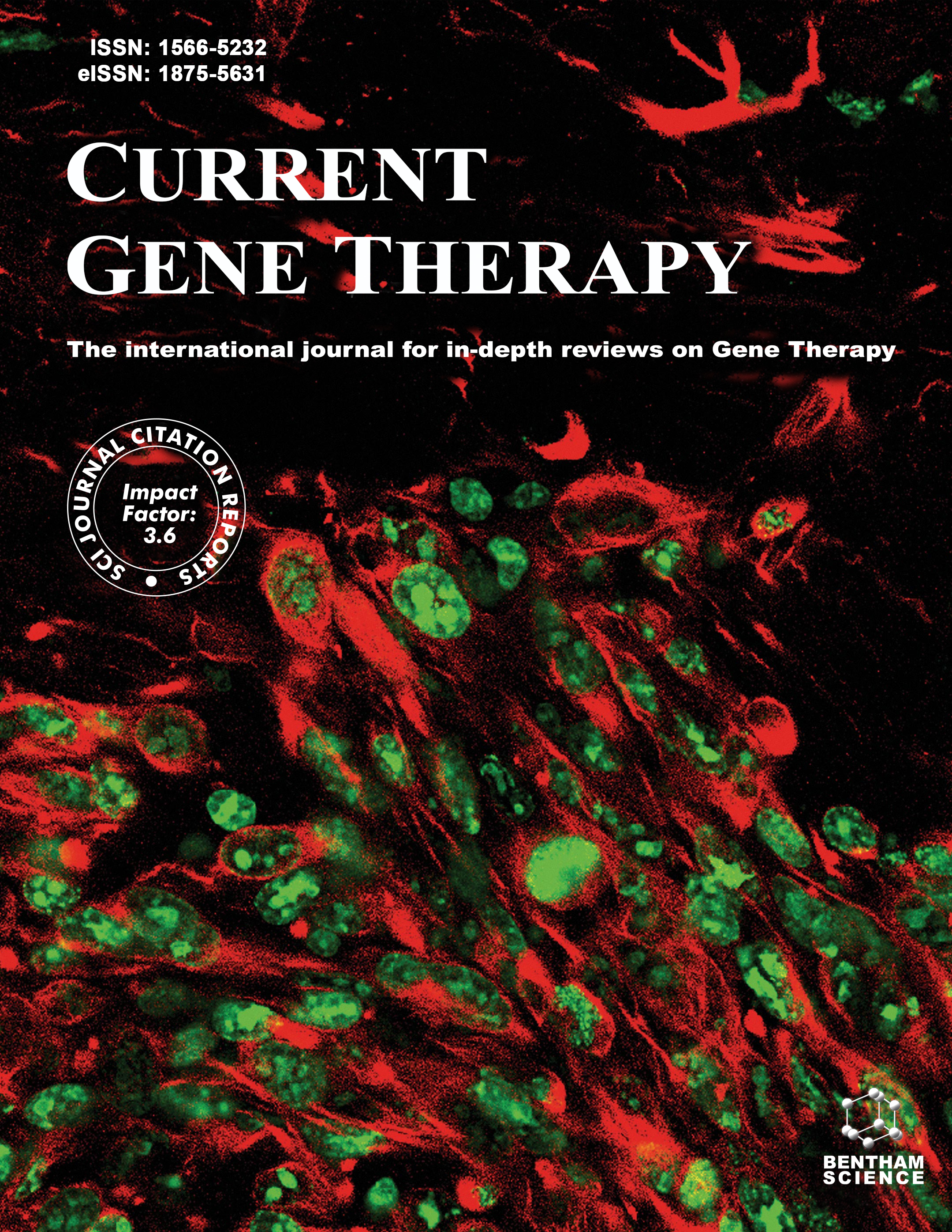- Home
- A-Z Publications
- Current Gene Therapy
- Previous Issues
- Volume 25, Issue 1, 2025
Current Gene Therapy - Volume 25, Issue 1, 2025
Volume 25, Issue 1, 2025
-
-
Gene Therapy for Skin Aging
More LessExtrinsic and intrinsic factors contribute to skin aging; nonetheless, they are intertwined. Moreover, intrinsic skin aging mirrors age-related declines in the entire human body's internal organs. There is evidence that skin appearance is an indicator of the general health of somebody or a visual certificate of health. Earlier, it was apparent that the intrinsic factors are unalterable, but the sparkling of skin aging gene therapy on th Read More
-
-
-
Development of Cell and Gene Therapies for Clinical Use in the US and EU: Summary of Regulatory Guidelines
More LessBy Anand RotteRecent decades have seen advancements in the management and treatment of difficult- to-treat diseases such as cancer. A special class of therapeutics called cell and gene therapy has been introduced in the past 10 years. Cell and gene therapy products have strengthened the treatment options for life-threatening diseases with unmet clinical needs and also provided the possibility of a potential cure for the dise Read More
-
-
-
Applications of L-Arginine in Pregnancy and Beyond: An Emerging Pharmacogenomic Approach
More LessL-arginine is a semi-essential amino acid that plays a critical role in various physiological processes, such as protein synthesis, wound healing, immune function, and cardiovascular regulation. The use of L-arginine in pregnancy has been an emerging topic in the field of pharmacogenomics. L-arginine, an amino acid, plays a crucial role in the production of nitric oxide, which is necessary for proper placental development and Read More
-
-
-
Advancements in CRISPR-Based Therapies for Genetic Modulation in Neurodegenerative Disorders
More LessAuthors: Bharat Bhushan, Kuldeep Singh, Shivendra Kumar and Anjali BhardwajNeurodegenerative disorders pose significant challenges in the realm of healthcare, as these conditions manifest in complex, multifaceted ways, often attributed to genetic anomalies. With the emergence of CRISPR (Clustered Regularly Interspaced Short Palindromic Repeats) technology, a new frontier has been unveiled in the quest for targeted, precise genetic manipulation. This abstract explores the recent advancements Read More
-
-
-
Evolution of Prime Editing Systems: Move Forward to the Treatment of Hereditary Diseases
More LessThe development of gene therapy using genome editing tools recently became relevant. With the invention of programmable nucleases, it became possible to treat hereditary diseases due to introducing targeted double strand break in the genome followed by homology directed repair (HDR) or non-homologous end-joining (NHEJ) reparation. CRISPR-Cas9 is more efficient and easier to use in comparison with other programmable Read More
-
-
-
HCST Expression Distinguishes Immune-hot and Immune-cold Subtypes in Pancreatic Ductal Adenocarcinoma
More LessAuthors: Boyi Ma, Dai-jun Zhang, Yabin Hu, Xianghan Chen, Ruining Gong, Ke Lei, Qian Yu and He RenIntroduction Pancreatic ductal adenocarcinoma (PDAC) is the most prevalent malignancy of the pancreas, and the incidence of this disease is approximately equivalent to the mortality rate. Immunotherapy has made a remarkable breakthrough in numerous cancers, while its efficacy in PDAC remains limited due to the immunosuppressive microenvironment. Immunotherapy efficacy is highly correlated with the abundan Read More
-
-
-
Efficacy and Safety of Pembrolizumab Monotherapy or Combined Therapy in Patients with Metastatic Triple-negative Breast Cancer: A Systematic Review and Meta-Analysis of Randomized Controlled Trials
More LessBackground Metastatic Triple-negative Breast Cancer (mTNBC) is the most aggressive form of breast cancer, with a greater risk of metastasis and recurrence. Research studies have published in-depth analyses of the advantages and disadvantages of pembrolizumab, and early data from numerous trials suggests that patients with mTNBC have had remarkable outcomes. This meta-analysis compares the data from numer Read More
-
Volumes & issues
-
Volume 25 (2025)
-
Volume 24 (2024)
-
Volume 23 (2023)
-
Volume 22 (2022)
-
Volume 21 (2021)
-
Volume 20 (2020)
-
Volume 19 (2019)
-
Volume 18 (2018)
-
Volume 17 (2017)
-
Volume 16 (2016)
-
Volume 15 (2015)
-
Volume 14 (2014)
-
Volume 13 (2013)
-
Volume 12 (2012)
-
Volume 11 (2011)
-
Volume 10 (2010)
-
Volume 9 (2009)
-
Volume 8 (2008)
-
Volume 7 (2007)
-
Volume 6 (2006)
-
Volume 5 (2005)
-
Volume 4 (2004)
-
Volume 3 (2003)
-
Volume 2 (2002)
-
Volume 1 (2001)
Most Read This Month
Article
content/journals/cgt
Journal
10
5
false
en

Most Cited Most Cited RSS feed
-
-
New Hope for Intervertebral Disc Degeneration: Bone Marrow Mesenchymal Stem Cells and Exosomes Derived from Bone Marrow Mesenchymal Stem Cell Transplantation
Authors: Xiao-bo Zhang, Xiang-yi Chen, Jin Qi, Hai-yu Zhou, Xiao-bing Zhao, Yi-cun Hu, Rui-hao Zhang, De-chen Yu, Xi-dan Gao, Ke-ping Wang and Lin Ma
-
- More Less

